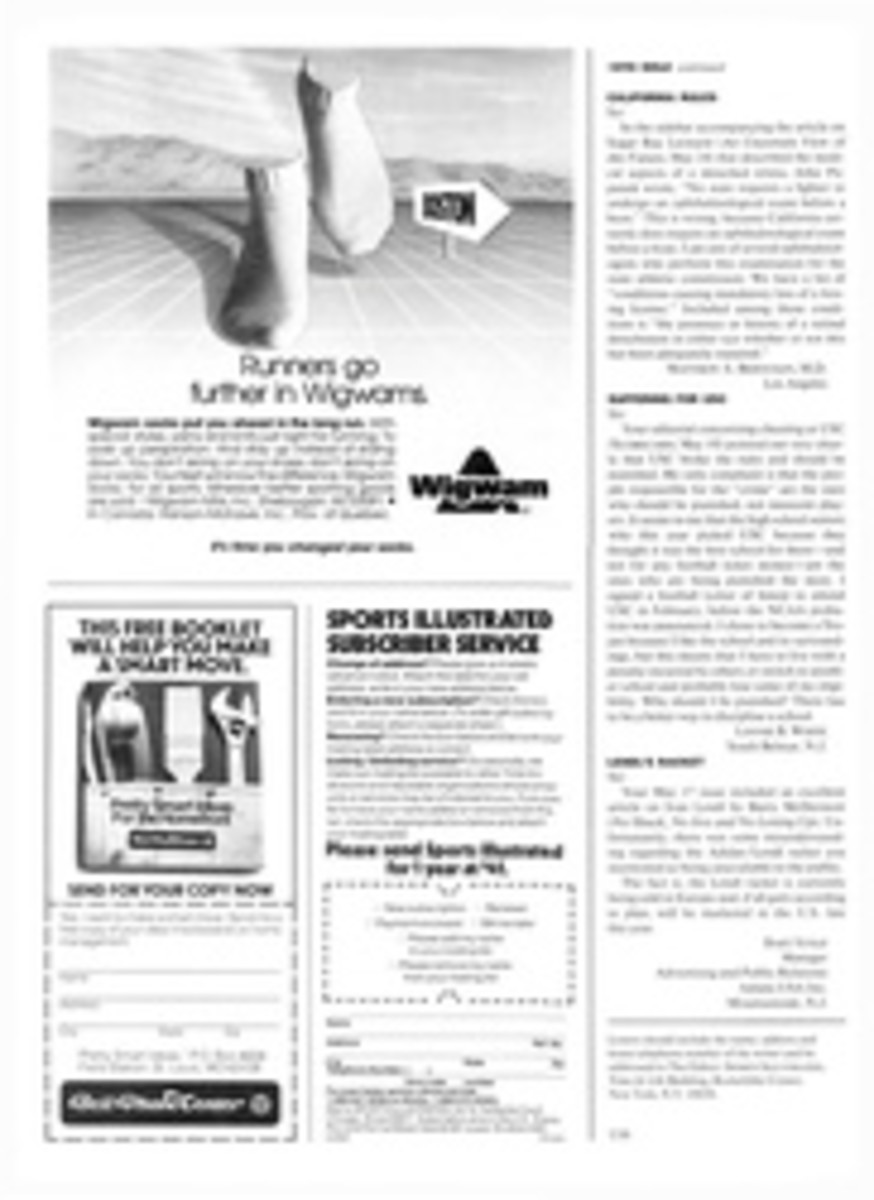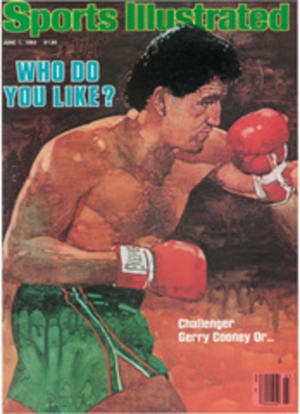
Two grand dames at sea
This wasn't a boat race," said Tom Conroy, commodore of the St. Francis Yacht Club, on Saturday afternoon, May 22. "This was a yachting event." And so saying, Conroy presented to Ted and Tom Eden, owners of Santana, a 91-year-old silver loving cup with curvaceous fin-de-siècle sirens engraved on its sides. Earlier that afternoon on wind-whipped San Francisco Bay, the Edens' Olin Stephens-designed yawl, built in 1935, had defeated another famous Stephens yawl, the 52-year-old Dorade, in a match race, an event as anachronistic as the boats themselves.
The whole idea of such a match—one wealthy sporting gent challenging another with nothing at stake except pride—is romantic enough in this age of George Steinbrenner, but when you throw in two renowned beauties like Santana and Dorade, you have the stuff of legend.
The 55-foot Santana was built for cruising and racing by W.L. Stewart Jr., son of the founder of the Union Oil Co. After the 1938 Bermuda Race, in which Santana won her class, Stewart sold her and she passed into the hands of a series of owners, one of them Humphrey Bogart. Santana eventually ended up in the care of Tom and Ted Eden, twins, architects, yachtsmen, bons vivants.
Whereas Santana's fame grew with the passing years, Dorade had hers from the beginning. Dorade was the boat that made Olin Stephens' reputation as a designer and changed the face of ocean racing. Until Dorade, successful racing yachts were usually big, gaff-rigged schooners, longer, wider and heavier than the 52-foot, 40,000-pound Dorade. In 1931, Olin, then 23, and his younger brother, Roderick Jr., entered Dorade in the Trans-Atlantic race from New York to Plymouth, England and finished so early that there wasn't a committee boat to greet them when they entered the harbor. A month or so later, Dorade again astounded the yachting world by winning England's Fastnet race, and when the crew returned to New York, it was given a ticker tape parade.
After Dorade, some of the most famous boats of the century came from Stephens' drawing board: Edlu, Stormy Weather, Baruna, Bolero, Ranger, Vim, Courageous, Finisterre. But Dorade was both the first of that line and the only boat Olin Stephens ever owned. In the 1938 Bermuda race, seven of the first 10 finishers, including Santana, were Stephens designs. By that time Dorade had gone west to San Francisco and then to Seattle, where she remained until 1978 when she was bought by a retired airline pilot, Tony Gomez, and returned to San Francisco.
The idea for the Santana-Dorade match race was hatched in the fertile brain of 49-year-old Robert C. Keefe, a staff commodore of the St. Francis and frequently the tactician aboard Santana in the Master Mariners Regatta, an annual race for vintage boats on San Francisco Bay that Santana has won six of the last seven years.
"My old man had a saying that I grew up with," says Keefe. " 'Make something happen,' he always said. 'Go out and make something happen.' " With this advice in mind, Keefe chartered Dorade from Gomez last December and began to get her into shape for the Master Mariners later this month. In the meantime, looking for still more action, Keefe formally challenged the Edens. Once they had accepted, the war of the handicaps began; it was waged furiously for weeks in the men's grill at the St. Francis and out on the dock alongside the two boats. Finally, on the morning of the race, the race committee, headed by Keefe's older brother, Jack, announced that Santana would give Dorade 84 seconds, or 10 boat lengths to windward, according to Tom Blackaller, the helmsman the Edens signed on to steer their boat.
Blackaller, who will be at the helm of Defender, a new 12-meter that is a contender to be, well, the defender in the 1983 America's Cup races, stands out in any crowd with his mane of silver hair, bushy black eyebrows and massive neck and shoulders, but he's especially intimidating at the wheel of a 45,000-pound lurching, pitching sailboat. He rides it like an urban cowboy on a mechanical bull, hooting and hollering and roaring joyous obscenities over the wind in a voice that could shatter fiber glass.
"When Keefe started threatening to bring in John Bertrand to steer his boat, that left us no choice," said Ted Eden before the race, all wide-eyed innocence. "We had to have Blackaller."
Bertrand is an Olympic sailor who was helmsman for the St. Francis VII that won the American-Australian six-meter challenge cup last winter in Sydney. As it turned out, Bertrand was busy the weekend of Dorade vs. Santana, so Keefe himself stood at the wheel of Dorade, a courageous figure in a white dress shirt and narrow club tie.
On race morning hundreds of spectators lined the tinted windows of the St. Francis and the seawall on either side of the clubhouse to see the old boats off, while a flotilla of powerboats, their occupants snapping pictures of the venerable contenders, circled the two competitors.
Fog shrouded the towers of the Golden Gate Bridge, though only a light haze obscured the view of Alcatraz and the city. Blackaller, however, was oblivious to the surroundings as he jockeyed with Dorade for position at the start, all the while shouting about what a grotesque handicap it was to have "two bleeping owners" aboard. Once, at close quarters with Dorade, Ted Eden yelled at Keefe, "You got a bunch of ringers on that boat."
"What do you call Blackaller?" Keefe yelled back.
"Everything but a ringer," Eden shouted.
"Grind the bleep out of that sheet," roared Blackaller.
The 12.5-mile, L-shaped course, beginning and ending in front of the yacht club, consisted of two windward-leeward legs, one short and one long, with Alcatraz Island at the crook of the L. Early in the race, when the wind was still relatively light, Dorade took the lead, but as the breeze picked up to 24 knots, Santana's size and power proved advantageous. Still, Blackaller was right when he said before the race, "The one who makes the fewest mistakes is going to win."
"Santana did a better job on the spinnaker reach than we did," Keefe said later. "We broke the reefing gear out of the main boom and that didn't help, but that wasn't the difference."
"Right behind Alcatraz there's a light spot, a wind cone," said Kimball Livingston, the boating writer for The San Francisco Chronicle who crewed on Santana. "They went too close to the island. We made a lot of time there."
With four miles to go, the race in the bag and Santana flying toward the St. Francis on a close reach, Blackaller cut loose, hooting and howling. "I bet when Humphrey Bogart sailed this boat it wasn't this fast," he shouted. "Let's not blow the rig out," said Tom Eden, gritting his teeth as he often does during a race, because he's never sure how much strain his old boat can take. "Bleep the rig," roared Blackaller, laughing now like a happy madman. A sea lion sunning itself on the narrow ledge of a buoy rolled over to watch Santana whiz by. As the yacht club drew close, Blackaller shouted one last command to the crew: "O.K., you guys, this is the bar-front tack. Let's make it look good."
Santana finished seven minutes, 38 seconds ahead of Dorade. With her 84-second handicap, she won by six minutes, 14 seconds. Back at dockside Blackaller was thrown overboard first, and after a fierce struggle, Keefe hit the water. Then everyone went into the clubhouse and drank champagne from the old silver cup with the curvy sirens on the sides and promised to do it all again next year,
THREE PHOTOS
Blackaller (left) had Santana narrowly ahead of Keefe and Dorade on a windward leg that carried them in front of the city on the Bay.
PHOTO
As the wind hit 24 knots, Santana turned on the power and pulled away from Dorade.

